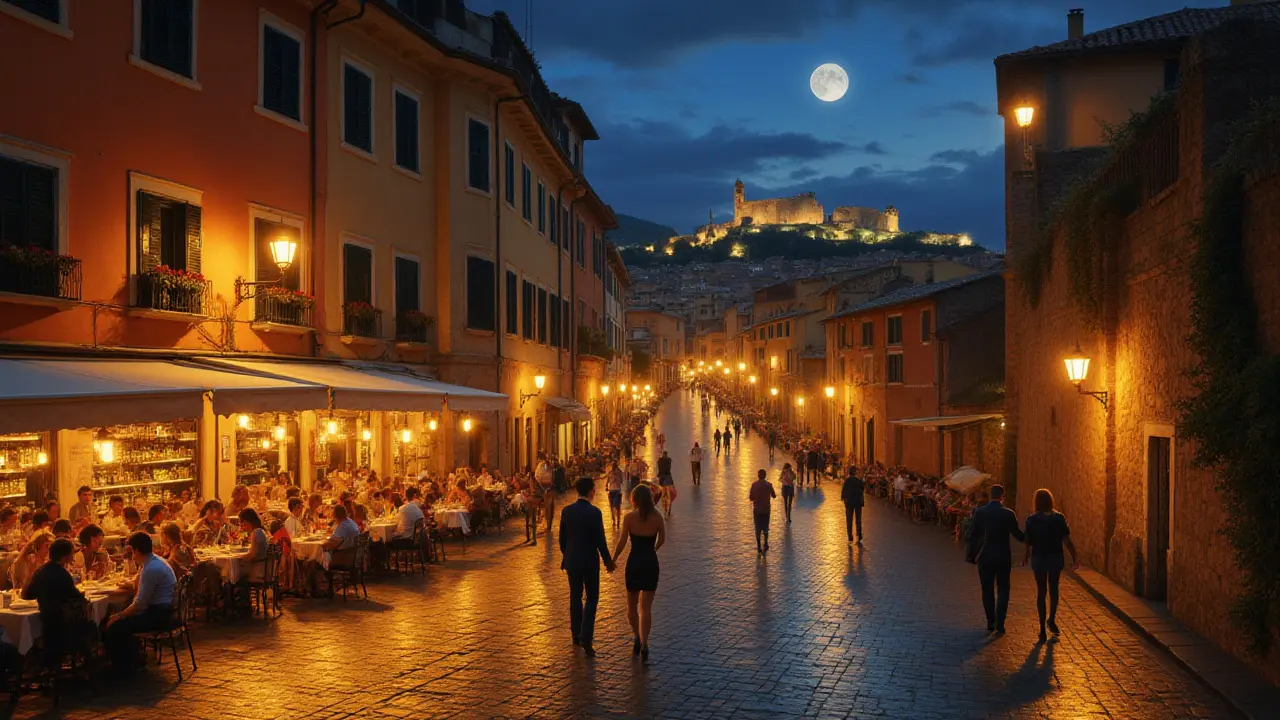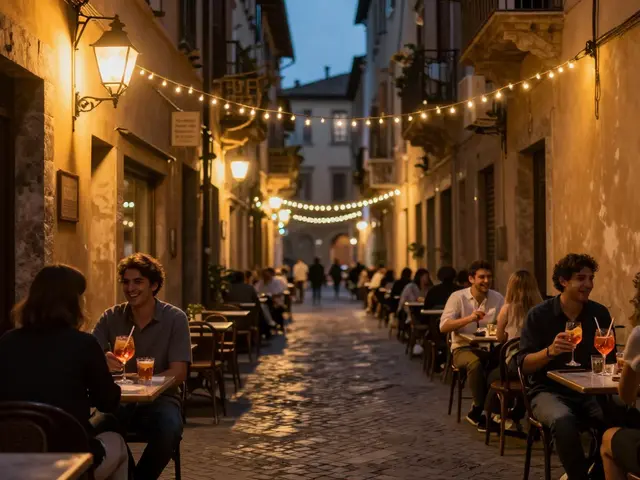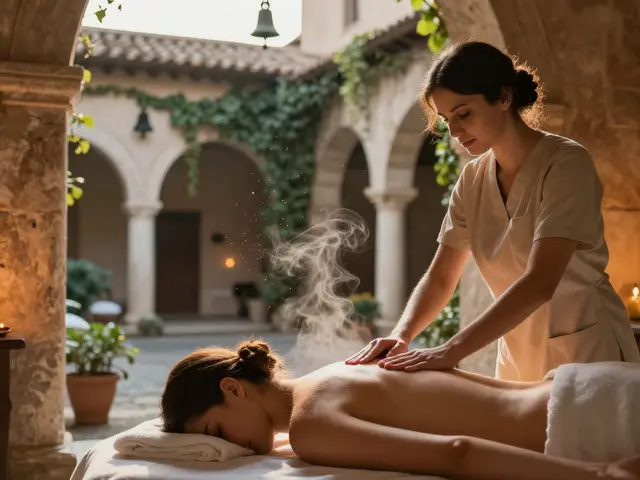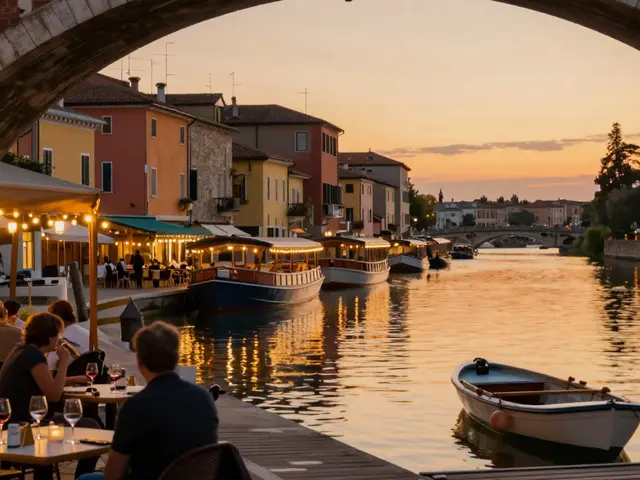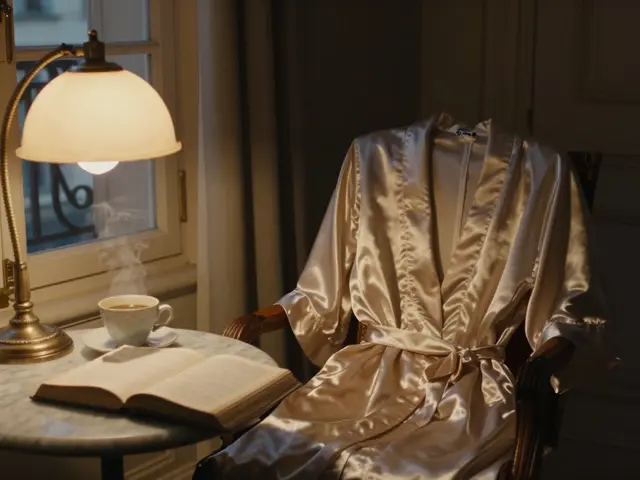Take a walk through Rome after dark, and the city flips a switch — suddenly, centuries-old ruins glow under soft floodlights, piazzas are alive with laughter, and tiny bars spill into cobbled laneways. If you think Rome sleeps early, you haven’t seen it through a local’s eyes. Welcome to a side of the city where espresso gives way to nightcaps, history mixes with happy hour, and every street feels like a scene from a movie. Whether you crave secret corners or famous sights at midnight, Rome never runs out of surprises. This isn’t just sightseeing. At night, Rome lets loose, and you’re invited.
Roaming Ancient Wonders by Moonlight
Rome is basically an open-air museum, but there’s something wild about seeing the ancient ruins after sunset. The Colosseum, all lit up, looks dramatically different when the crowds thin out. Night tours run almost year-round, and there’s a quiet magic when you stare across the arena floor imagining gladiators battling by torchlight. Not everyone knows this, but the rome at night tours actually penetrate deeper into the hypogeum (the underground labyrinth where wild animals and fighters waited). The Forum and Palatine Hill are usually closed by early evening, but special night openings in summer let you wander past marble columns under the stars. Tip: book these experiences ahead — they fill up fast, especially the Friday night visits, which locals love for their tranquil vibe.
If you wander towards the Pantheon, you find another kind of spectacle. The area is floodlit just right, and the crowds are thinner, but there’s usually a musician or two trying out some Sinatra or Italian pop classics. It’s surreal — kids chasing each other, couples leaning against ancient pillars, all framed by the world’s best-preserved Roman temple. Stand still for two minutes, and you really feel time stop. Just across the way, Sant'Eustachio’s cafe still serves espresso until late, so you can sip with a view of history.
Don’t miss Castel Sant’Angelo at night. The bridge leading there, lined with Bernini’s angels, is a spot that photographers love after dusk. During summer months, the castle itself stays open for night tours, and you can climb to the top for 360° views of the Tiber River — Rome’s version of magic hour.
The Vatican is quieter than you’d expect after hours, too. St. Peter’s Basilica glows like a beacon (they say 780 LED lights keep it shining) and the square sees more locals than tourists once the shops close. It’s tranquil but not empty: you’ll spot joggers, nuns, and the occasional priest heading home on a bicycle — that’s Rome for you.
Ancient Rome at night is epic — but plan around special events. Around late June, the “Lungo il Tevere” festival runs along the riverbanks below Trastevere with pop-up bars, art stalls, and music until 2 am most nights. If you time your visit right, you’re in for something truly unique: the ruins overhead, lively nightlife below, and the summer breeze clearing out the heat of the day.
The Piazza Parade: Soaking Up Roman Social Life
Even if you’re not the party type, Rome’s piazzas at night are a show unto themselves. Locals — especially younger folks — use piazzas the way Americans use parks: meetups, low-key hangouts, and sometimes impromptu concerts. Campo de’ Fiori, for example, transforms from a flower and produce market in the morning to a buzzing hub of energy after nightfall. The bars ringing the square pour Negronis and Aperol Spritzes with perfect efficiency, and street performers draw small crowds at every corner. If you feel outgoing, strike up a chat — Romans love to debate football, politics, or the best local pasta.
Piazza Navona is the classic. Once a Roman arena, now it’s the city’s go-to spot for artists, gelato carts, and buskers with surprisingly good voices. At night, the light off Bernini’s Four Rivers Fountain looks surreal, almost like a movie set. Here’s a quick pro tip: locals favor the gelaterias on the side streets rather than the main square (try a scoop of nocciola for real hazelnut flavor). Pull up a seat at a cafe, order an amaro or grappa, and watch life drift by one conversation at a time.
Another lesser-known favorite: Piazza della Madonna dei Monti. Tucked just up the hill from the Colosseum, it draws a younger, hip crowd — think indie music, craft beers, and thrift-store fashion. The stone fountain at the center is THE gathering spot. Some nights, DJs set up for guerrilla sets. Other nights it’s just people drinking beers from the corner shop and sharing take-out pizza.
If you have extra time, try Piazza Trilussa in Trastevere for a blend of students, musicians, and street poets. Everything feels spontaneous, and the energy ramps up around midnight. Street food vendors turn up with fried suppli (rice balls stuffed with mozzarella) and cornetti (Italian croissants) for late-night cravings. Don’t worry about an agenda — just show up, sit on the steps, and let the city entertain you.
Here’s a breakdown of Rome’s popular piazzas by vibe and crowd, using rough local estimates based on city surveys:
| Piazza | Best Time | Typical Crowd | Notable For |
|---|---|---|---|
| Piazza Navona | 9pm–1am | Tourists, couples, families | Street artists, fountains, history |
| Campo de' Fiori | 10pm–2am | Youth, expats, locals | Bars, nightlife, open-air socializing |
| Piazza Madonna dei Monti | 8pm–2am | Young crowd, creatives | Funky bars, street music |
| Piazza Trilussa | 12am–3am | Students, musicians | Street poetry, night riverside |
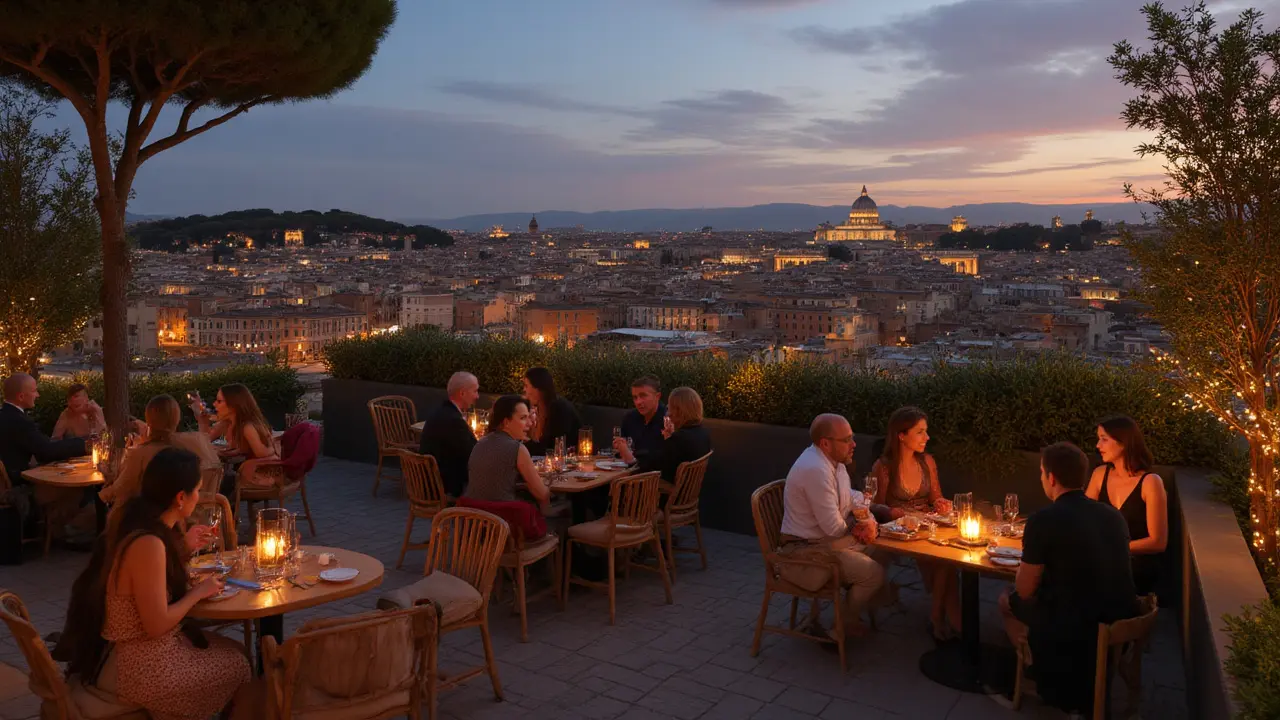
Drinks, Music, and Rooftop Views
Now let’s talk about where Rome parties after 9pm. People here love to linger, and the city’s bar scene manages to mix ancient scenery with modern tastes. Some of the best rooftop bars sit on top of old palazzos; even budget travelers can often afford a single spritz for a million-euro view. Terrazza Borromini has sweeping vistas over Piazza Navona. Salotto 42, just off the Pantheon, draws a designer crowd and has been called one of the world’s most beautiful bars. None of these places get lively until after dark, and reservations help — but there’s always a spot at the bar if you show up with a smile.
Down at street level, Trastevere is a mecca for bars. Magnebevo e sto a Ponte Ponte Sisto serves legendary house cocktails, while Freni e Frizioni is famous for their free buffet at happy hour. Some nights morph from low-key aperitivo to full-on dance party, and you’ll often see DJs squeezing between olive trees on the tiny terraces. Here’s another local tip: most bars serve snacks with drinks (called "stuzzichini"). It’s not dinner, but those salty olives and mini sandwiches add up as you go.
If you want a taste of live music, try Alexanderplatz for jazz (think: classic cellar club with red velvet booths), or check listings at Big Mama, the city’s home for blues and soul. During summer, major Roman parks and even the Roman Baths of Caracalla host open-air concerts. Imagine watching a rock band or an opera with two-thousand-year-old ruins as your backdrop — that only happens here.
Cocktail culture is really coming up in Rome, too. Speakeasy-style bars like The Jerry Thomas Project require a password (scour their social media for clues). Bartenders here take mixology seriously — you’ll see fresh herbs, craft bitters, and vintage glassware. Don’t skip their signature Negroni twist, it’s unforgettable. On the slightly more mainstream side, rooftop hotels along Via Veneto pump out mojitos and martinis for anyone in a collared shirt or a summer dress. The dress code isn’t strict, but you probably don’t want to show up in shorts and flip-flops — Romans appreciate style, even just at the bar.
Underground Rome: Hidden Gems and Late-Night Curiosities
If you want to feel like a local or surprise someone with an experience they'd never find in a guidebook, chase Rome’s after-hours secrets. First, the city’s “spezzatura” culture — that’s the art of making things look effortless — means some of the best nightlife hides in plain sight. Walk through the Monti neighborhood, and you’ll stumble into hidden jazz clubs that only reveal themselves when the lights go down. Blackmarket Hall is a place with vintage couches, low ceilings, and bands you’ve probably never heard of (but might soon want on your playlist). People here will strike up conversation if you look lost or carry a guitar.
For something truly oddball, look up Rome’s “ghost tours,” which explore haunted ruins and shadowy alleys. These aren’t tourist traps; the guides have deep local knowledge and back up their stories with real Roman legends. On some nights, you’ll touch on the ancient catacombs, and the air is thick with echoes from two millennia ago. Another weird tradition? “Wine windows” — tiny carved stone shelves built into Renaissance walls, where you ring a bell and a hidden hand passes you a glass or a bottle. A handful reopened after the pandemic, mostly around Via della Scrofa. It’s part history, part Instagram gold.
If you love street art, Ostiense becomes a different place after dark, with whole buildings covered in murals that almost come alive under neon lights. There’s usually a craft beer pop-up under the ancient Gasometro structure. You’ll meet skateboarders, young creatives, and maybe even an off-duty muralist. For night owls, Campo Marzio’s late-night bookstores and secondhand music shops overflow with people right around midnight during festival seasons.
Still hungry after midnight? A favorite Roman move: hit the so-called “pizza al taglio” places that serve fresh slices until 3am. Try pinsa, the local style — oblong, crunchy, and covered in crazy toppings. Or, chase down the city’s “trapizzini,” a pizza-sandwich hybrid stuffed with classics like chicken cacciatore or eggplant parmigiana. Romans call this “il morso della notte” — the midnight bite. Some of the best food in Rome is found between midnight and 3am, especially in neighborhoods like Testaccio, home of the city’s foodie counterculture.
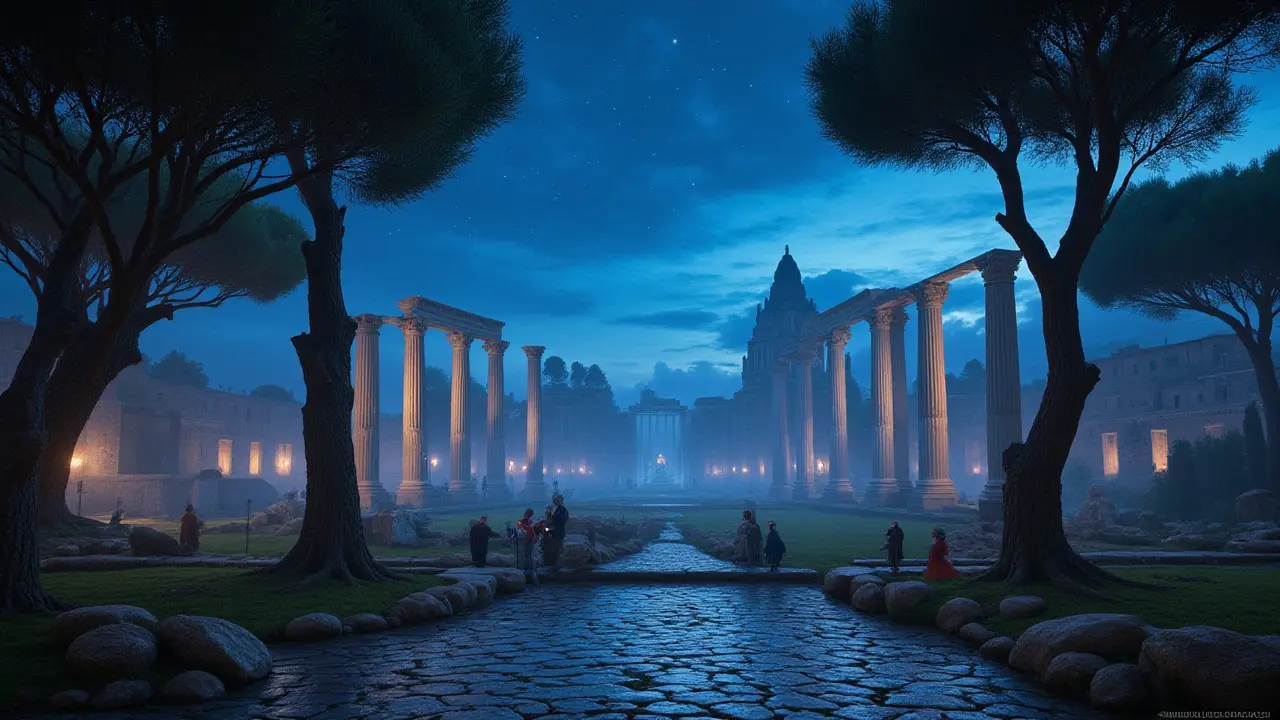
Practical Tips for Rome at Night: Travel, Safety, and Insider Hacks
So you want to maximize your night in Rome without worry or fuss. Let’s get real: Rome is busy and safe on the main drags, but just like in any big city, the usual travel smarts apply. The Metro stops running around 11:30pm (midnight on weekends), so plan to walk, grab a taxi, or use ride-sharing apps like Freenow after hours. Licensed taxis cluster at major piazzas and train stations — if anyone offers you a "private car service" on the street, skip it. Pro tip: always check that the taxi meter is running, and round up to avoid breaking change at 2am.
Purse snatching and petty theft are rare but still a concern in tourist-heavy areas, especially outside the Termini station and on crowded buses. Stash your stuff safely, watch your pockets, and skip the flashy jewelry late at night. Romans walk everywhere, so don’t fear the dark — the busiest nightlife neighborhoods are alive until almost sunrise come summer.
Speaking of timing, dinner in Rome starts late, often after 8:30pm, and there’s no rush to leave the table. If you want a more relaxed meal, book the last seating at a trattoria and linger until midnight. Many restaurants close by 12:30 or 1, but bars always last longer. If you miss dinner, hit a bar for snacks and plan on a late-night bite later.
Rome’s dress code isn’t formal for most places, but a bit of effort goes a long way. Locals tend towards dark jeans, sneakers, and crisp shirts or blouses, even on hot nights. Save the beach shorts, especially in bars with rooftop views — you’ll stand out in a not-so-good way. If you come in winter, remember that Roman nights get cold fast, so pack a jacket, even if the daytime is toasty.
Need cash late at night? Look for ATMs (called "bancomat") inside or near banks for added safety. Major credit and debit cards work almost everywhere, but tiny gelato shops and old-school bars sometimes wave away cards late at night — always good to have a bit of cash in your pocket just in case.
And here’s an odd but helpful tip: Roman fountains often pump out freezing cold, potable water. The "nasoni" (big-nosed fountains) dot almost every piazza, so fill a bottle before your adventures, especially in summer when dehydration sneaks up on you. Romans swear the water keeps hangovers in check, too.
Getting home after a night out isn’t hard. Rome is walkable — but apps like Citymapper can plot a route even as the buses slow down in the early hours. Don’t be shy about asking locals for a shortcut; most love to play city guide and share their favorite late-night secrets. And if you’re traveling solo, know that lively crowds act like a safety net — Rome’s social fabric is thick after dark, so enjoy the energy. Who knows which ancient piazza or jazz club will become your favorite memory?
